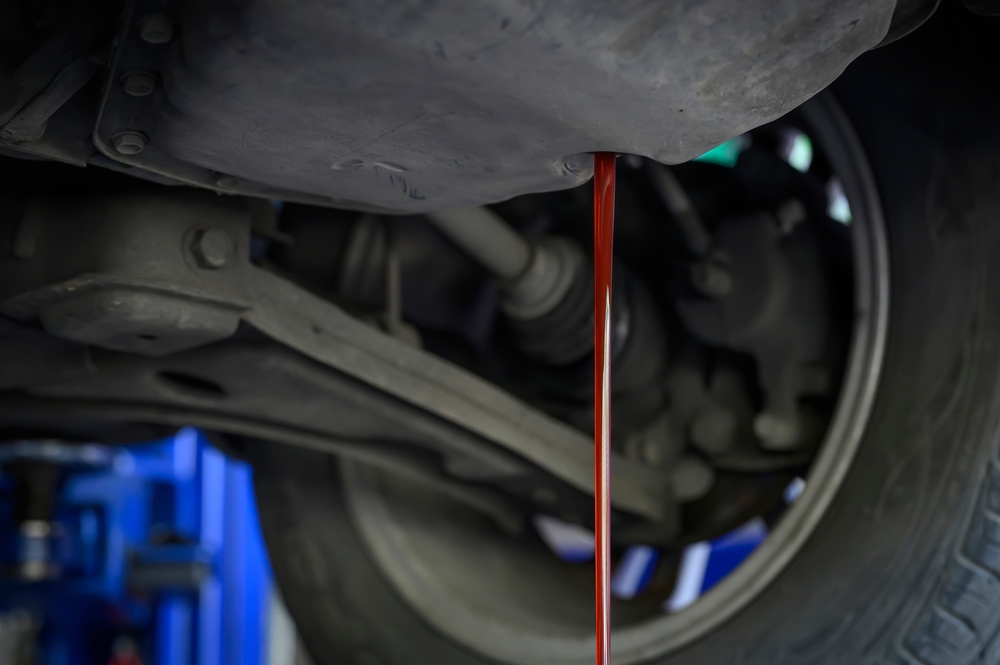There are certain indicators within a vehicle that can signal the condition of a few different components, and a great example here is transmission fluid. It’s common for transmission fluid to be a condition indicator for certain related elements of a vehicle – which are these, and how can various statuses of your transmission fluid offer clues?
At Tip Top Transmissions, we’re proud to serve as the best expert transmission & auto repair shop around Salt Lake City, providing a variety of transmission repairs and related services. Here are some of the elements of transmission fluid that are condition indicators for different parts of your vehicle, plus what to think about depending on the status of your transmission fluid.

Color and Clarity
When inspecting transmission fluid during any kind of maintenance or repair, one of the most basic elements to look for is color and clarity. New transmission fluid has a translucent red color, but over time it can become darker and more opaque as it collects contaminants and debris from regular use.
If your transmission fluid is dark brown or black and has particles floating in it, this usually indicates that the fluid is dirty and needs to be changed. However, if the fluid is still reddish in color but looks cloudy or milky, this could be a sign of water or coolant mixing into the transmission system. This can lead to serious damage if not addressed promptly.
The clarity of transmission fluid is important because it allows mechanics to visually inspect the condition of the fluid and determine if any contaminants or issues need to be addressed. In addition to color and clarity, the level of transmission fluid should also be regularly checked and topped up when necessary.
Burnt Smell
One especially notable sign of trouble when changing or inspecting transmission fluid is a burnt smell. This can indicate that the fluid is overheating or has been contaminated by other fluids such as engine oil. The burning smell could also be caused by friction between worn transmission components.
If you notice a burnt smell, it is important to have your transmission system checked immediately. Ignoring this sign could lead to further damage and potentially costly repairs.
Texture of Fluid
Another possible indicator of issues via your transmission fluid is a change in texture. Healthy transmission fluid should feel smooth and slippery to the touch, similar to vegetable oil. If you notice a gritty or chunky texture, this could mean that your transmission fluid has been contaminated with debris or metal shavings from worn components.
In addition, if your transmission fluid appears foamy or bubbly, it may have air bubbles mixed in which can affect its performance. This could be caused by low fluid levels or issues within the system such as leaks or damage to the seals.
Contaminants Present
If certain contaminants are found in your transmission fluid, they can signal potential problems with your transmission. Here are a few possible transmission fluid contaminants and what they might mean:
- Dirt or metal shavings: This could indicate wear and tear on parts within the transmission and may require repairs or replacements.
- Water: The presence of water in transmission fluid can cause corrosion and damage to the internal components of the transmission. It is important to address this issue immediately.
- Engine coolant: If engine coolant is found within the transmission fluid, it may suggest a leak in the transmission cooler or other internal component. This can lead to overheating and potential failure of the transmission.
Leakage or Low Fluid Levels
In other cases, you may notice that your transmission fluid is leaking or that the fluid levels are low. This can be caused by a variety of factors:
- Worn seals: Over time, the seals on your transmission can wear down and cause fluid to leak out. This can happen due to age or excessive use of the vehicle.
- Damaged pan gasket: The pan gasket is responsible for sealing the transmission pan to prevent fluid from leaking. If this gasket becomes damaged or worn, it can lead to leaks.
- Loose drain plug: If the drain plug is not tightened properly after a fluid change, it can cause fluid to leak out.
In any of these cases, professional repair or replacement is necessary in order to fix the leak and ensure proper functioning of your transmission.
At Tip Top Transmissions, we’re here to offer the best expert transmission & auto repair shop services available around Utah, including help with transmission fluid. Contact us today for assistance with any need, including the signs transmission fluid might be giving you about the status of your vehicle.

